
For more information, call 808 200 520
If you do not do so by
april 30th,
you can incur fines
of up to €10,000
and businesses can incur fines
of up to €120,000.
After the aforementioned deadline, city councils will be entitled to clean scrublands in lieu of the owners, who will be obligated to provide access to their land and to pay any expenses incurred by the city council.
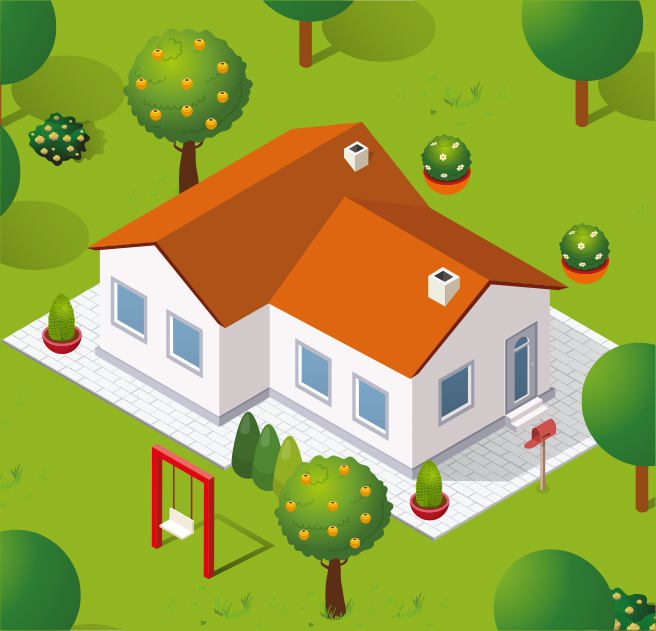
IN CASE OF FIRE, CALL 112
People whose homes are in the countryside or forest are more vulnerable to fires because of their proximity to vegetation.
Clearing the vegetation around your home is the best way to prevent a fire from reaching you and your property.
It is, therefore, very important that you obey the rules and restrictions in effect.
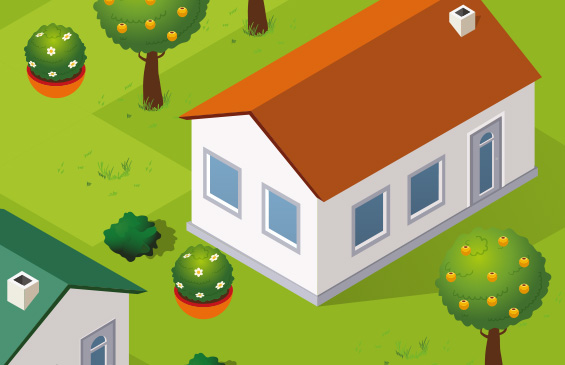
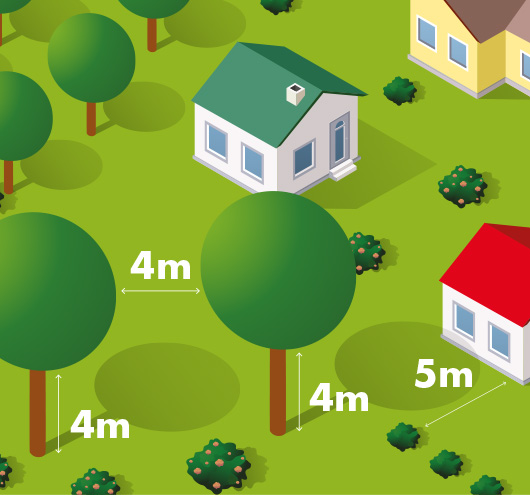
A fuel break of 50 metres must be created around all homes, warehouses, workshops, factories and yards, as follows:
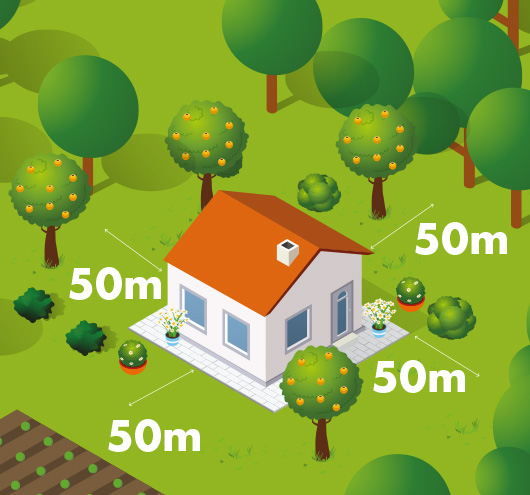
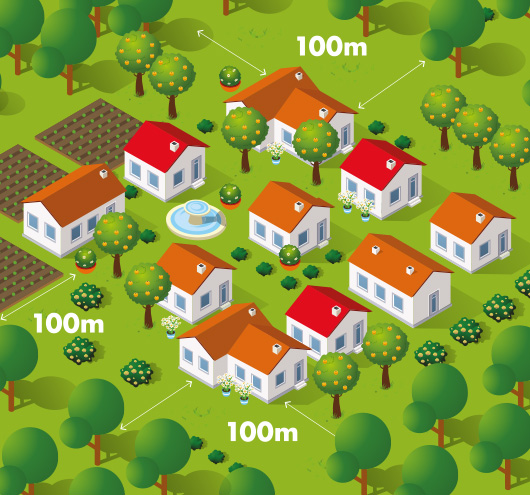
An area of 100 metres around villages, campsites, industrial parks, logistics platforms and landfills must be cleared of trees.
Well-kept gardens and agricultural areas (unless they are fallow lands or permanent pastures) do not need to implement the foregoing measures.
Fuel management is the reduction of vegetable and woody materials to make it difficult for fire to spread vertically (from the herbaceous layer to the shrub layer and, in turn, to the crown) and horizontally (throughout the various layers). In short, it means cutting weeds, shrubs and trees in some areas.
When a fire reaches the areas where fuel management was performed, it decreases in intensity. Homes and villages will be safer.
Firefighters can intervene more effectively and safely in areas where fuel management has been performed.
In the event of a large fire, fuel management reduces the need to concentrate firefighting resources in residential areas, thereby making more firefighters available to protect the forest. Fuel management along roads also creates better conditions to prevent fire from spreading.
Fuel management is mandatory and must be carried out within a range of 50 metres around buildings or facilities (houses, yards, warehouses, workshops, factories and other structures) located in rural areas. This fuel break (strip of land cleared of combustibles) is measured from the exterior wall of a building or structure.
In the case of population clusters (10 or more houses) the fuel break must be widened to 100 metres.
The deadline for fuel management is april 30th.
All owners, tenants, users and entities with land in the aforementioned areas, even if they are not the owners of the buildings, must perform fuel management.
The entities responsible for road, rail, electric and other networks, as well as the managers of industrial areas, campsites, logistics centres and other infrastructures, are also required to perform fuel management.
Fuel management does not mean eliminating all vegetation. A tree, provided it is pruned and there is a distance of 4 metres between its canopy and that of other trees, and more than 5 metres from the house, does not need to be cut down. For pine and eucalyptus trees, the minimum distance between canopies is 10 metres. High flammability species should be avoided in the area surrounding your house.
Until may 31st 2020, city councils will ensure that fuel management has been performed, carrying out fuel management works provided for by law in lieu of non-complying owners and other forest producers. To ensure compliance with the enforced implementation of all fire prevention measures, city councils work in collaboration with the authorities.
You should alert the competent authorities to the situation, including the government body that owns it. You can also call 808 200 520 to report the situation.
You should alert the competent authorities to the situation, particularly the city council. You can also call 808 200 520 to report the situation.
No. In this case, you are not required to perform fuel management.
It is up to the owners, tenants, users or entities who have land, whether they own it or not, within the 100-metre radius around a village, to perform fuel management on their respective lands. No trees are permitted less than 5 metres from the houses.
Fuel management must be performed within a range of 10 or more metres along both sides of a private access road. Despite there being a road, fuel management must be performed within a 50-metre radius, measured from the house.
Indigenous species, most of which are leafy, have moderate or reduced flammability. With deciduous trees, such as chestnut trees, fire resistance is even greater given the high moisture content of the leaves. Certain forest stands with short-leaf species, whether deciduous or coniferous, of high density and with dense cover, are a natural barrier against fire. However, there must be a distance of 4 metres between the canopies of chestnut trees.
When possible, there must be a distance of 4 metres between the canopies of the trees that make up the tree crown cover and the base of the crown must be at least 4 metres above the ground.
You must ensure that there is a horizontal fuel break along the fuel management strips.
The maximum vegetation height is that indicated in the table below and varies depending on the percentage of ground cover:
| Percentage | Maximum vegetation height |
|---|---|
| Less than 20% | 100 cm |
| Between 20% and 50% | 40 cm |
| Over 50% | 20 cm |
You should alert the competent authorities to the situation, including the city council. You can also call 808 200 520 to report the situation.
Some trees are legally protected, such as cork and holm oaks. These trees may only be cut down with authorisation from the Institute for Nature Conservation and Forests (ICNF – Instituto de Conservação da Natureza e das Florestas). Trees of public interest must also be protected. We recommend that you refer to the information available at: http://www2.icnf.pt/portal/florestas/aip
At least 50% of the height of all trees up to 8m tall, including pine and eucalyptus trees, must be pruned. Trees that are 4.5m tall should, therefore, be pruned up to a height of 2.25m, measured from the ground.
Yes. If a tree is less than eight metres tall, simply prune half.
You should alert the competent authorities to the situation, in particular the Portuguese Republican Guard (GNR) and the city council. You can also call 808 200 520 or visit http://www.gnr.pt/ambiente.aspx to the report the situation.
The law applies to rural and forest areas, including those neighbouring urban areas. It is, therefore, important to ensure that there is always a 100-metre fuel break around population clusters. Wildland-urban interfaces are a fire hazard and fuel management is essential.